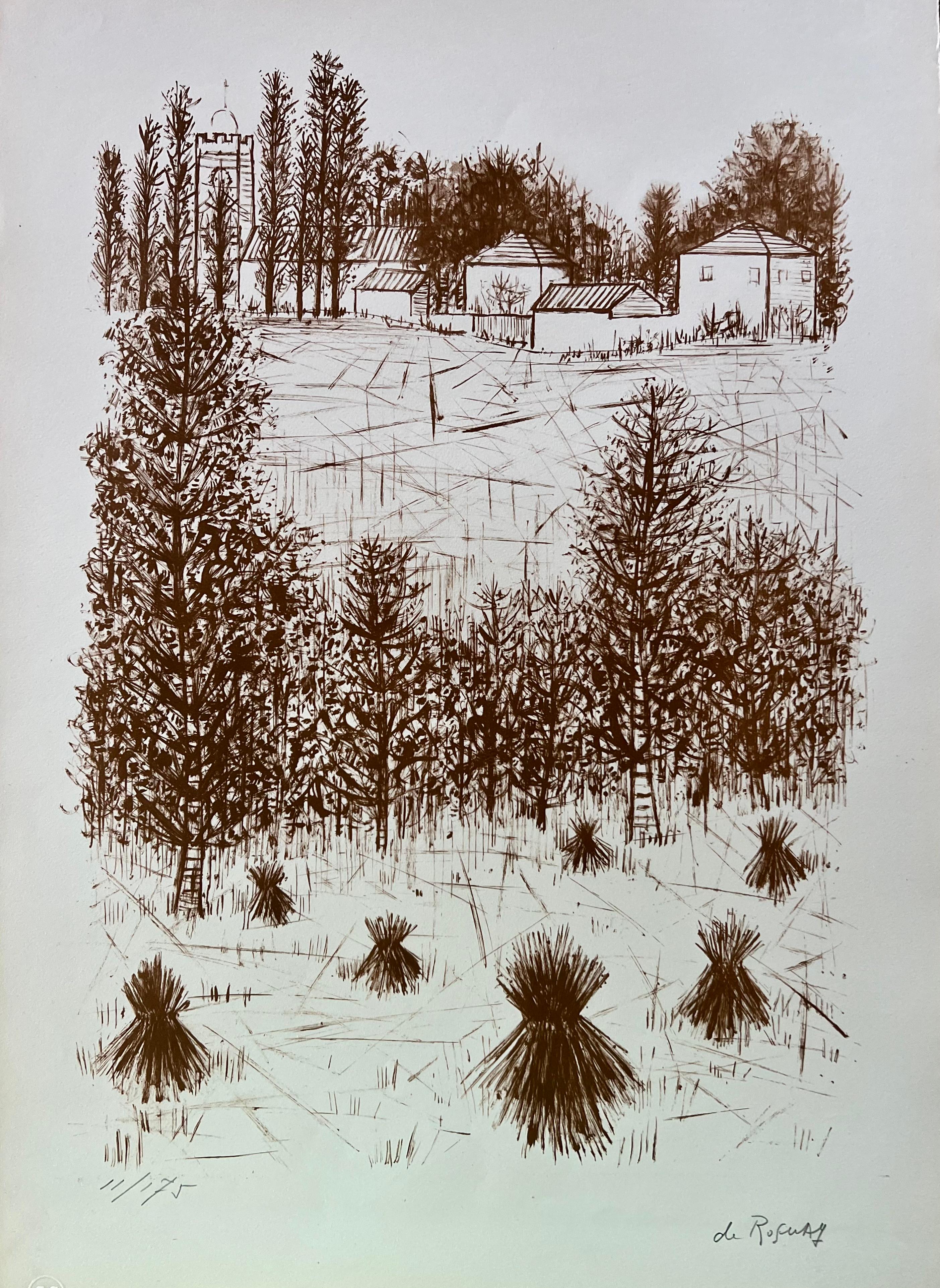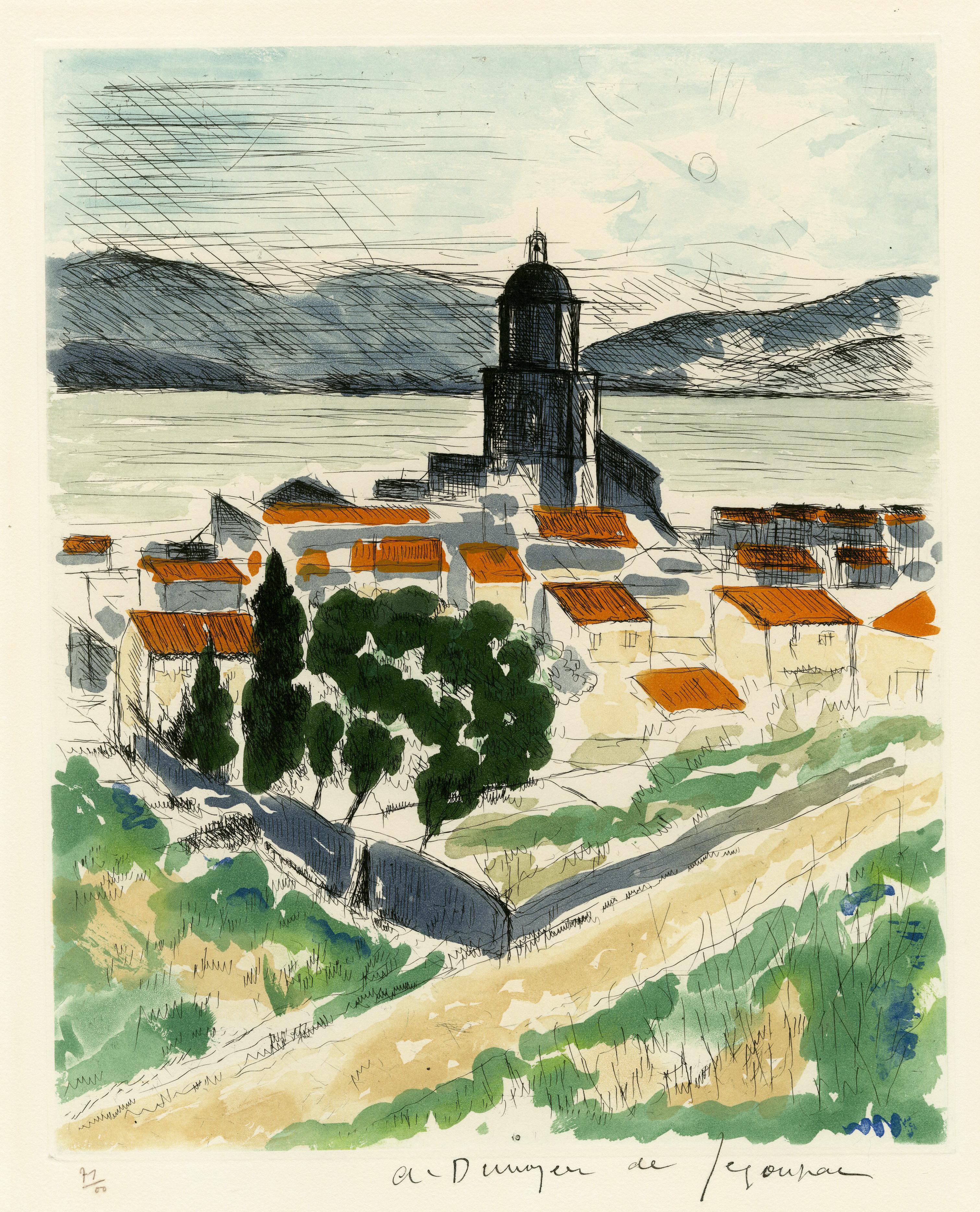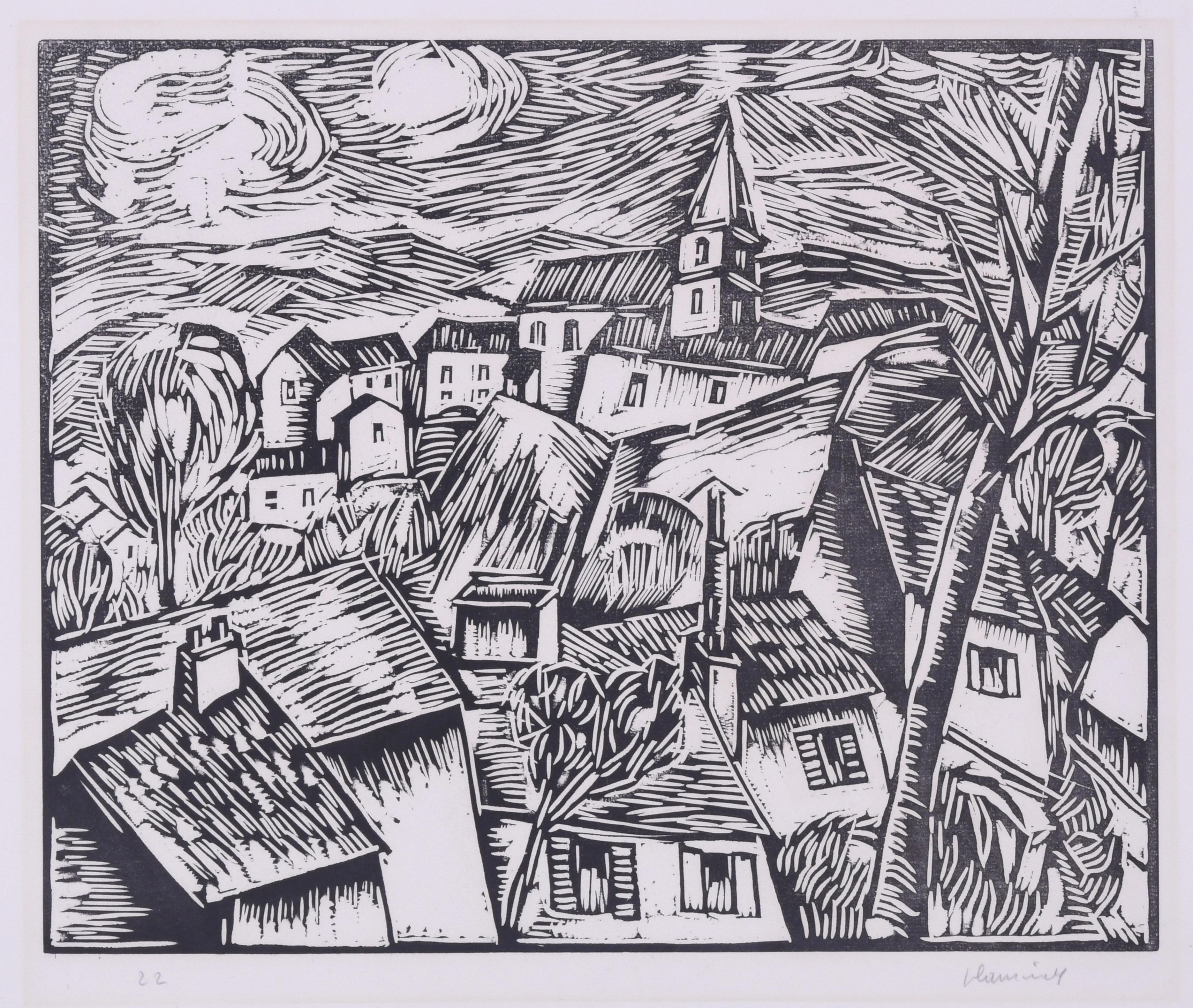Items Similar to Ladies in The Paris Street - Belle Epoque Period - Original Pair
Want more images or videos?
Request additional images or videos from the seller
1 of 14
LEBAS Léonie (19th-20th)Ladies in The Paris Street - Belle Epoque Period - Original PairCirca 1890
Circa 1890
About the Item
LEBAS Léonie (19th-20th) -
Paris Belle Epoque Genre Scene -
Oil on wood in pair -
Copper leaf frames. Wood Dim (each) : 22 X 16 cm - Dim frame (each) : 37 X 31 cm -
For sale in pair.
LEBAS Léonie French Painter 19th-20th century. Genre painter, lively landscapes, Paris Belle Epoque - Associate of French Artists from 1884. She appeared at the Salon of this company - Bibliography: Dictionary of painters E. Bénézit Book VIII / 372.
- Creator:
- Creation Year:Circa 1890
- Dimensions:Height: 14.57 in (37 cm)Width: 12.21 in (31 cm)Depth: 1.19 in (3 cm)
- Medium:
- Movement & Style:
- Period:
- Condition:
- Gallery Location:Saint-Ouen, FR
- Reference Number:

About the Seller
5.0
Vetted Seller
These experienced sellers undergo a comprehensive evaluation by our team of in-house experts.
1stDibs seller since 2016
51 sales on 1stDibs
Typical response time: 21 hours
- ShippingRetrieving quote...Ships From: Saint-Ouen, France
- Return PolicyThis item cannot be returned.
More From This SellerView All
- Painting postimpressionist children at Paris gardenBy Alice DannenbergLocated in Saint-Ouen, FRDANNENBERG Alice (1861-NC) "Children playing at the Luxembourg garden (Paris)" Oil on canvas signed low right Gault frame gilded with gold leaves Dim canvas : 50 X 61 cm Dim frame : ...Category
Early 1900s Post-Impressionist Landscape Paintings
MaterialsOil
- Table Setting With Bunch of FlowersLocated in Saint-Ouen, FRCOSSON, Jean Louis Marcel (1878 – 1956) The Bunch and The Maid circa 1930 Oil on canvas signed up left Framed by GAULT (Paris) Dimensions canvas : 56 X 46 cm Dimensions frame : 74 X...Category
1930s Post-Impressionist Portrait Paintings
MaterialsOil
- Lady With The Bunch of Flowers, Painting Post-impressionistBy Jacques MartinLocated in Saint-Ouen, FRMARTIN Jacques (1844-1919) Lady With Bunch of Flowers Oil on canvas signed up right Framed by Gault (Paris) Dim canvas : 74 X 59 cm Dim frame : 97 X 82 cm MARTIN Jacques (1844-1919) French painter 19th-20th century Born in 1844 in Villeurbanne. Dead the 13th of November 1919 in Lyon Postimpressionist Painter of genre, still-lives, flowers. Exhibitions : Lyon Salon from 1881 and Paris Indépendants Salon. Enviable standing in the Lyon's school. Museums : Paris Luxembourg...Category
1890s Post-Impressionist Portrait Paintings
MaterialsOil
- Painting 20th Century Post Impressionist Paris MontmartreBy Jules René HervéLocated in Saint-Ouen, FRHERVE Jules René (1887-1981) Tourists in Paris Montmartre Oil on canvas signed low right Gault framer (Paris) Dim canvas : 46 X 55 cm Dim frame : 66 X 75 cm HERVE Jules René (1887-19...Category
Mid-20th Century Post-Impressionist Landscape Paintings
MaterialsOil
- Post Impressionist BandshellBy Jules René HervéLocated in Saint-Ouen, FRHERVE Jules René (1887-1981) Bandshell in Langres Garden Oil on canvas signed low right Old frame gilded with leaves Dim canvas : 46 X 55 cm Dim frame : 66 X 75 cm HERVE Jules René ...Category
Mid-20th Century Post-Impressionist Landscape Paintings
MaterialsOil
- Pond of the Tuileries Garden in ParisBy Jules René HervéLocated in Saint-Ouen, FRHERVE Jules René (1887-1981) Pond of the Tuileries Garden in Paris Oil on canvas signed low right Old frame gilded with leaves Dim canvas : 46 X 55 cm Dim frame : 67 X 76 cm HERVE J...Category
Mid-20th Century Post-Impressionist Landscape Paintings
MaterialsOil
You May Also Like
- Along the Seine, Landscape Painting by Louis DancourtBy Louis DancourtLocated in Long Island City, NYArtist: Louis Dancourt, French XXth Title: Along the Seine II Year: 1946 Medium: Oil on Canvas mounted to Wood, signed l.r. and dated verso Image Size: 16 x 20 in. (40.64 x 50.8 cm) ...Category
1940s Fauvist Landscape Prints
MaterialsCanvas, Wood, Oil
- untitled, farm scene with wheat bundlesLocated in Belgrade, MTThis lithograph is part of my private collection from the 20th Century School of Paris. It is original, pencil signed and numbered by the artist. Guilde de la Gravure. It is in very...Category
Mid-20th Century Post-Impressionist Landscape Prints
MaterialsLithograph, Paint
- FerryLocated in Ljubljana, SIFerry. Original color lithograph, 1950. Edition of 200 signed and numbered impressions on the Arches paper. Zoran Mušič is one of the most celebrated Slovenian artists, born close to...Category
1950s Post-Impressionist Animal Prints
MaterialsLithograph
- Guy Bardone - Original Handsigned Lithograph - Ecole de ParisBy Guy BardoneLocated in Collonge Bellerive, Geneve, CHGuy Bardone Original Handsigned Lithograph Dimensions: 76 x 54 cm Edition: HC XXI/XXX HandSigned and Numbered Ecole de Paris au seuil de la mutation des Arts Sentiers Editions Guy Bardone was one of the great painters of the “Ecole de Paris” and of the second mid twenty century. Guy Bardone French, (1927 - ) Guy Bardone Guy Bardone was born in 1927 in Saint-Claude, on of the most beautiful old towns in France. His vocation as a painter was confirmed after admission to the Ecole National Supérieure des Arts Decoratifs in Paris. Here he trained under Brianchon, Cavailles and Desnoyer. He was awarded the prestigious Prix Félix Fénéon in 1952 which set wider horizons and allowed him entry into the Paris arena. Guy Bardone est né en 1927 à Saint-Claude (Jura). Après des études à l'école des Beaux-Arts de Lyon, il entre à l'école supérieure des arts décoratifs où il reçoit les enseignements de Brianchon, Cavaillès et Desnoyers. En 1950, il rencontre le critique George Besson qui l'encourage et le conseille. En 1952, il obtient le Prix Félix Fénéon et commence à exposer dans divers salons et expositions de groupe. il est sélectionné en 1953 à la très importante expositions de groupe "célébrités et révélations de la peinture contemporaine...Category
1960s Post-Impressionist Landscape Prints
MaterialsLithograph
- Saint TropezBy André Dunoyer de SegonzacLocated in Fairlawn, OHSaint Tropez Etching with aquatint, printed in colors, 1964 Signed in ink and numbered in pencil Edition: 71/100 Issued for the album St. Tropez et la Provence, in 1966 Reference: Lo...Category
1960s Post-Impressionist Landscape Prints
MaterialsEtching
- BougivalBy Maurice de VlaminckLocated in Fairlawn, OHBougival Woodcut, 1914 Signed and numbered in pencil Edition 30, this numberd 22 Printed on laid Van Gelder Zonen paper Published by Henri Kanweiler, Paris Printed by Paul Birault, Paris Bougival is located west of Paris, on the left bank of the River Seine. This woodcut was inspired by Vlaminck's 1905 Fauvist masterpiece of the same title in the collection of the Detroit Institute of Art. An impression of this image is in the Yale Univeristy Art Gallery, Condition: Very slight sun staining, otherrwise very good Image/block size: 13 1/4 x 16 1/4 inches Sheet size: 19 1/8 x 22 1/8 inches Reference: Walterskirchen 11b Maurice de Vlaminck (4 April 1876 – 11 October 1958) was a French painter. Along with André Derain and Henri Matisse, he is considered one of the principal figures in the Fauve movement, a group of modern artists who from 1904 to 1908 were united in their use of intense colour.] Vlaminck was one of the Fauves at the controversial Salon d'Automne exhibition of 1905. Life Maurice de Vlaminck was born on Rue Pierre Lescot in Paris. His father Edmond Julien was Flemish and taught violin and his mother Joséphine Caroline Grillet came from Lorraine and taught piano His father taught him to play the violin.[3] He began painting in his late teens. In 1893, he studied with a painter named Henri Rigalon on the Île de Chatou In 1894 he married Suzanne Berly. The turning point in his life was a chance meeting on the train to Paris towards the end of his stint in the army. Vlaminck, then 23 and already active in anarchist circles in Paris, met an aspiring artist, André Derain, with whom he struck up a lifelong friendship.] When Vlaminck completed his army service in 1900, the two rented a studio together, the Maison Levanneur, which now houses the Cneai,[6] for a year before Derain left to do his own military service. In 1902 and 1903 he wrote several mildly pornographic novels illustrated by Derain. He painted during the day and earned his livelihood by giving violin lessons and performing with musical bands at night. Vlaminck participated in the controversial 1905 Salon d'Automne exhibition. After viewing the boldly colored canvases of Vlaminck, Henri Matisse, André Derain, Albert Marquet, Kees van Dongen, Charles Camoin, and Jean Puy, the art critic Louis Vauxcelles disparaged the painters as "fauves" (wild beasts), thus giving their movement the name by which it became known, Fauvism. In 1911, Vlaminck traveled to London and painted by the Thames. In 1913, he painted again with Derain in Marseille and Martigues. In World War I he was stationed in Paris, and began writing poetry. Eventually he settled in Rueil-la-Gadelière, a small village south-west of Paris. He married his second wife, Berthe Combes, with whom he had two daughters. From 1925 he traveled throughout France, but continued to paint primarily along the Seine, near Paris. Resentful that Fauvism had been overtaken by Cubism as an art movement Vlaminck blamed Picasso "for dragging French painting into a wretched dead end and state of confusion". During the Second World War, Vlaminck visited Germany and on his return published a tirade against Picasso and Cubism in the periodical Comoedia in June 1942. Vlaminck wrote many autobiographies. Vlaminck died in Rueil-la-Gadelière on 11 October 1958. Artistic career Two of Vlaminck's groundbreaking paintings, Sur le zinc (At the Bar) and L'homme a la pipe (Man Smoking a Pipe) were painted in 1900. For the next few years Vlaminck lived in or near Chatou (the inspiration for his painting houses at Chatou), painting and exhibiting alongside Derain, Matisse, and other Fauvist painters. At this time his exuberant paint application and vibrant use of colour displayed the influence of Vincent van Gogh. Sur le zinc called to mind the work of Toulouse-Lautrec and his portrayals of prostitutes and solitary drinkers, but does not attempt to probe the sitter's psychology—a break with the century-old European tradition of individualized portraiture. According to art critic Souren Melikian, it is "the impersonal cartoon of a type. In his landscape paintings, his approach was similar. He ignored the details, with the landscape becoming a vehicle through which he could express mood through violent colour and brushwork. An example is Sous bois, painted in 1904. The following year, he began to experiment with "deconstruction," turning the physical world into dabs and streaks of colour that convey a sense of motion. His paintings Le Pont de Chatou (The Chatou Bridge), Les Ramasseurs de pommes de terre (The Potato Pickers...Category
1910s Fauvist Landscape Prints
MaterialsWoodcut
Recently Viewed
View AllMore Ways To Browse
Original Art Pair
Framed Art In Pairs
Belle Epoque
Antique Belle Epoque
Company Period Art
Art Paris Salon Scene
19th Century Oil Painting Paris
19th Century Oil Paintings Paris
19th Century Pair Paintings
Art Street Scenes Of Paris
19th Century French Paintings Portraits
19th Century Street Painting
Pair Of Portraits Framed
Oil Pairings 19th Century
Impressionist Paintings Of Paris Street
Oil Paris Street Scene
Belle Epoque Art
Belle Epoque Paris




